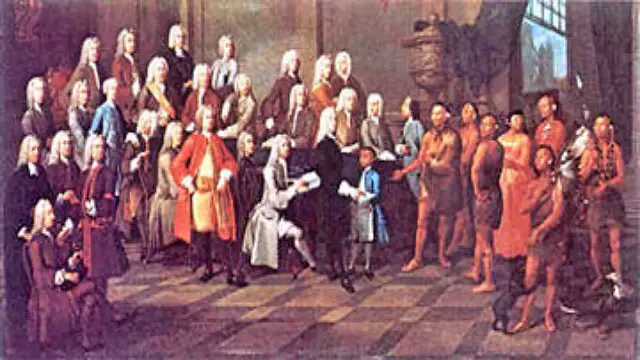Discover the Untold Story of Native American Treaties!
Throughout history, treaties between colonial powers and Native tribes have come and gone, often dictated by changing circumstances. However, one of the most significant and lasting agreements was the Great Covenant Chain. This series of treaties initially bound the Dutch and later the British to trade and mutual aid agreements with the Iroquois, also known as the Haudenosaunee. Over time, these agreements extended to other tribes and governmental entities.
The Quest for Freedom and Profit
Many colonists arrived in America seeking freedom, but the companies and governments that supported them were primarily after profit. One of the most valuable commodities in the 17th century was beaver fur. European and American markets prized beaver pelts for their beauty, durability, and water resistance, making them ideal for hats. Instead of hunting beaver themselves, colonists found it more efficient to trade with Native Americans, who were skilled in trapping and hunting.
Natives were often more open to allowing settlers on their land if they received something in return. Trade goods, especially firearms and ammunition, were particularly enticing. These items enhanced the Natives’ hunting capabilities, making the trade mutually beneficial.

The Two Row Wampum Treaty
The first treaty in the Covenant Chain series was the Two Row Wampum Treaty, established in 1613 between the Dutch and the Mohawk, the most influential Iroquois tribe. This treaty granted the Dutch exclusive rights to the beaver trade, making the Mohawk and other Iroquois tribes their primary suppliers. However, this arrangement strained relations with other tribes, leading to the Beaver Wars.
During these conflicts, the Iroquois gained dominance over tribes weakened by warfare and disease, controlling vast territories from Maritime Canada to the Mississippi Valley. As Dutch influence waned, the British stepped in, renewing the Two Row Wampum terms in 1664.
Alliances and Treaties
In 1675, during King Philip’s War in New England, the Iroquois, particularly the Mohawk, allied with the British against rebellious tribes. The Royal Governor collaborated with Onondaga leader Daniel Karakontie to strengthen the alliance. In gratitude for the Mohawk’s support, leaders in Massachusetts and Connecticut entered into a treaty that addressed relations between the Iroquois and neighboring tribes, as well as between the British and the Five Nations.
This treaty included standard phrases that became common in Native treaties, such as “as long as the sun shines on the earth” and “as long as the water flows.” These phrases symbolized the enduring nature of the agreements.
The 1677 Treaty and the Covenant Chain
In 1677, another treaty was established, binding the Five Nations and the Lenape in a trade and peace accord with Virginia and Maryland. Council meetings were often held in Albany, New York. During one such meeting in 1684, the Governor of New York referred to the agreement as the Covenant Chain. A Seneca speaker emphasized the importance of maintaining the chain, stating, “let the chain be kept clean and bright as silver so that a great tree cannot break it to pieces if it falls on it.”
To symbolize this bond, a silver chain with three large links—representing Peace, Respect, and Friendship—was presented to tribal leaders.
The Breaking Point
The Covenant Chain remained in effect until 1753 when Iroquois leaders, frustrated by encroaching settlements, confronted colonial officials in Albany. They declared that the Covenant Chain was broken and presented concrete demands to restore it. The British were expected to remove squatters from Native lands and appoint a trusted representative, Sir William Johnson, to advocate for their interests.
In response, the British took control of negotiations regarding Indian affairs, appointing Johnson as the first superintendent of the new British Indian Department. Johnson worked to reform the Covenant Chain through a series of treaties, notably the Fort Stanwix Treaty in 1768.
The Legacy of the Covenant Chain
The United States inherited the Covenant Chain relationship in 1794 with the Treaty of Canandaigua. This treaty guaranteed the Iroquois’ rights to their lands in New York and ensured free access to their relatives in Canada.
The Great Covenant Chain serves as a reminder of the complex relationships between colonial powers and Native tribes. While many treaties were made and broken, the enduring nature of the Covenant Chain highlights the importance of trade, mutual aid, and respect in these interactions.
Conclusion
The history of the Great Covenant Chain is a testament to the intricate web of treaties that shaped the relationships between colonial powers and Native tribes. Understanding this history is crucial for recognizing the ongoing impact of these agreements on contemporary Native American rights and sovereignty.

